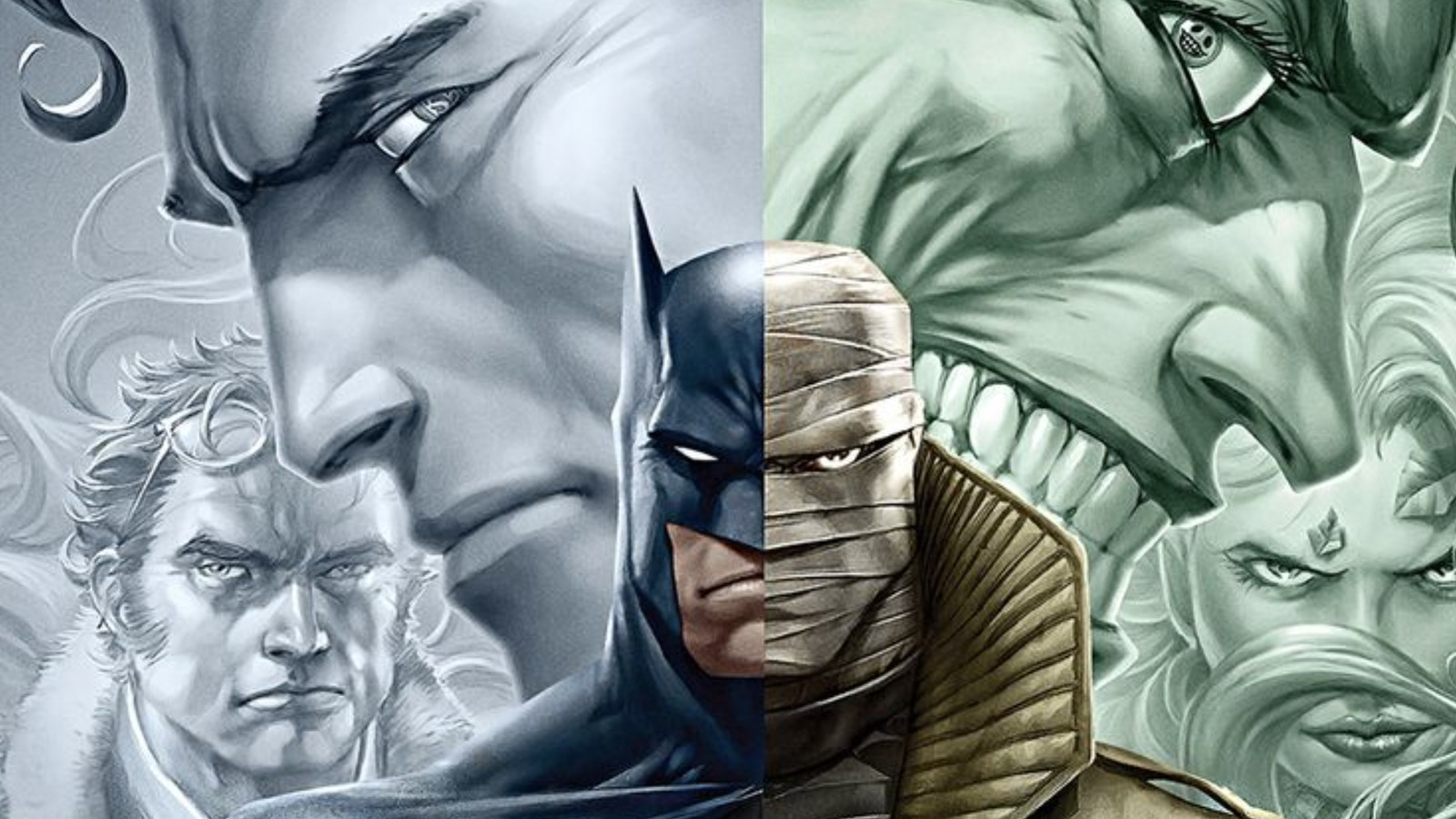
Though in the minority, I don’t mind the movie making the Riddler into Hush, because I never found Thomas Elliot as Hush to be a satisfying answer in the comic. The whole point of Hush is he’s someone intimately familiar and obsessed with Batman, so inventing a new character to fill that role left little impact. Plus, even in the comic, Riddler is the real mastermind, so the movie’s twist is more faithful to the source material than you might think.
Advertisement
Now, where the movie falls shorter is the Riddler’s fate. In the comic, despite the Riddler knowing Batman’s true identity, he still loses. As Batman’s deduces, Riddler’s compulsions will keep him from ever spilling the truth; he can’t reveal Batman’s identity, because what good is a riddle if everyone knows the answer to it? In the movie, Riddler falls to his death into a pool of molten metal; Batman (Jason O’Mara) tries to save him, but Catwoman (Jennifer Morrison) lets him fall. Both the original and adaptation end with them splitting up, but in the movie, Riddler’s death is the breaking point.
Since “The Long Halloween,” Loeb focused a lot on Bruce Wayne and Selina Kyle’s romance. “Hush” builds on that, as Batman slowly lets himself trust Catwoman, while Selina realizes the two men she’s in love with are the same person. In “Batman” #615, Batman takes off his mask and shares all of himself with Selina: “I have two halves. I want you to be part of both of them.”
Advertisement
The animated “Hush” rightfully understands that Batman and Catwoman’s complicated love is the core of the story. For all the film cuts, everything about that relationship is kept. But like Batman and Catwoman, “Hush” (and Loeb’s whole Batman saga) has two hearts, and the film completely leaves out the other one.
That would be Harvey Dent/Two-Face. Though the absence of Tim Sale muddies the connection a bit, “Hush” is a spiritual sequel to “The Long Halloween.” That comic is all about Dent’s downfall; how he goes from Gotham District Attorney and Batman’s ally to becoming one of the city’s super-villain “freaks.” “Hush” is Harvey’s redemption; Elliot uses his plastic surgery skills to fix Harvey’s scarred face, and that heals his mental scars too. In the final chapter of “Hush,” it’s Harvey who saves Batman and defeats Elliot. Batman muses he’s lost one friend, but may have regained another.
Hush’s bandaged look, too, evokes Two-Face’s design from the most influential Batman comic ever, Frank Miller’s “The Dark Knight Returns.”
Hush is one many villains designed as a mirror image of Batman, but no villain fills that role quite as well as Two-Face does.
“The Dark Knight Returns” suggested that not even surgery to heal Two-Face’s appearance would tame his bad side. “Hush,” though, builds on the heroic and determined Harvey Dent we met throughout “The Long Halloween.” Dent’s story there was a tragedy, while “Hush” ends with hope for him.
Advertisement
The animated “Batman: Hush” understands the comic is a Catwoman and Riddler-centric story, but forgot it’s also a Two-Face one.



